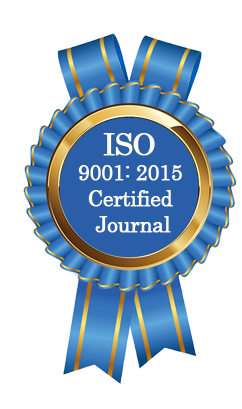| All | Since 2020 | |
| Citation | 105 | 60 |
| h-index | 4 | 4 |
| i10-index | 3 | 2 |
WJAHR Citation 
Login
News & Updation
Best Article Awards
World Journal of Advance Healthcare Research (WJAHR) is giving Best Article Award in every Issue for Best Article and Issue Certificate of Appreciation to the Authors to promote research activity of scholar.
Best Article of current issue
Download Article : Click here
Indexing
Abstract
SOCIO-DEMOGRAPHIC RISK FACTORS FOR COMORBIDITY OF TYPE 2 DIABETES MELLITUS-PRIMARY OPEN ANGLE GLAUCOMA IN IMO STATE NIGERIA
Eberendu Izuchukwu Francis*, Abanobi Okwuoma Chi. and Ozims Stanley James
ABSTRACT
Comorbidity is a major health concern all over the world with a huge number of people diagnosed each day. This research work studied the demographic risk factors for comorbidity of type 2 diabetes mellitus-primary open angle glaucoma(T2DM-POAG) in Imo state, South Eastern Nigeria through a population based case-control study design. The subjects concerned in this study were 198 adults aged, 40 years and above, diagnosed of T2DM-POAG comorbidity (99 cases and matched 99 controls). Variables taken into consideration were: age, sex, educational background, marital status, occupation. Data analyses were performed using IBM-SPSS statistics version 23 for data analyses. Weighted test such as Wald test was used to test for significant factors in the model. The factors were considered significant at 5% level. Odds ratio were computed so as to measure the strength of the association between each of the exposures (the risk factors of interest) and the outcome. Confidence interval (CI) at 95% level was also calculated for each odds ratio. Results showed Occupation such as office clerk and teaching were found to be significant factors of T2DM-POAG comorbidity in both the univariate and the multivariate analysis with higher odds attached to both factors compared to farmers. Age was not found as a significant demographic factor which is quite a surprise, considering the fact that age is an established separate risk factor of diabetes and glaucoma, as well as in both combinations. Educational level was also found to be significant in the adjusted analysis (p=0.011, 95%CI= 0.071 – 0.0708) and the adjusted odds ratios (AOR =0.22) rather indicates lower risk of T2DM-POAG comorbidity compared to the participants with non-formal education. Implications for the control of the comorbidity were discussed in line with the research questions. Research work like this, tend to broaden the perspectives related to factors that play a vital role during the designing of preventive procedures and development of public health interventions regarding T2DM-POAG comorbidity.
[Full Text Article] [Download Certificate]
